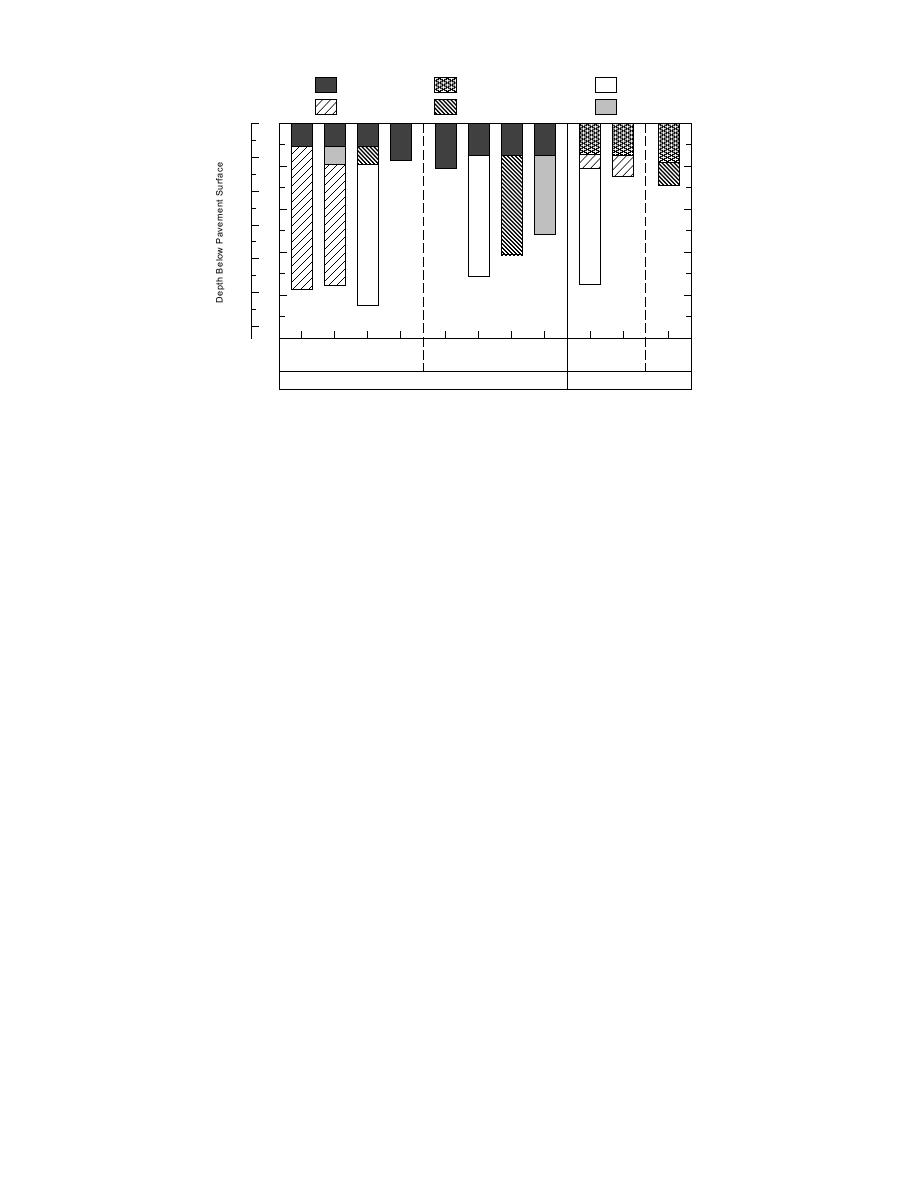
Asphalt Concrete
Portland Cement Concrete
Class 3
(cm)
(in.)
Class 4
Class 5
Class 6
0
0
20
10
40
20
60
30
80
100
40
120
50
F-1
F-2
F-3
F-4
F-14
F-19
F-21
F-22
R-5
R-6
R-11
5 Year (ML 5-)
10 Year (ML 10-)
5 Year
10 Year
Flexible
Rigid
Figure 6. Pavement structure of Mn/ROAD test sections simulated.
CL in the Unified Soil Classification System and
Phase 2, an effort in the summer of 1992, had
an A-6 in the AASHTO Classification System
two primary objectives. Phase 2A included three
(Bigl and Berg 1996a). Of the four subgrade
series modeling the eight flexible sections with
samples tested at CRREL, two exhibited high heav-
the mean freeze season and changing the method
ing in the frost susceptibility test, while the other
employed to calculate the asphalt and subgrade
two ranked as having a medium heave rate.
modulus. Phase 2B investigated the variability in
The mechanistic procedure was applied to 11
predictions when temperatures from freeze sea-
test sections, which were distributed among the
sons with maximum and minimum freezing indi-
designs as follows: four 5-year flexible, two 5-
ces are applied to a single flexible section.
year rigid, four 10-year flexible, and one 10-year
Phase 3, an effort in the summer of 1993, ex-
rigid. Figure 6 and Table 7 show the pavement
panded the investigation of the effects of freeze
structures of the test sections simulated. Seven of
season characteristics. This series modeled 21 dif-
the test sections had variable water table depths
ferent freeze seasons applied to one full-depth and
along their lengths, and these were simulated at
one conventional flexible section.
the two extreme water table positions. Table 8
lists the test sections and water table conditions
Phase 1
simulated as well as the nomenclature used to
denote the various cases. The case nomenclature
Pavement sections
includes the Mn/DOT test section number and the
The Mn/ROAD mainline facility has 23 test
water table depth (in ft) preceded by a "w." For
sections, including both flexible and rigid pave-
example, f1w9 refers to Mn/ROAD test section
ment systems, that are designed to fail after either
ML5-F-1 with a water table 2.7 m (9 ft) below the
5 or 10 years. Included in the test matrix are pave-
pavement surface and r11w6 refers to section
ment systems with various thicknesses and quali-
ML10-R-11 with a water table 1.8 m (6 ft) below
ties of base and subbase materials. The base/sub-
the pavement surface. All but one case involved
base materials have a "special" Mn/DOT grading
the high-heaving subgrade (sample 1206) beneath
designation for the test facility and range from
the pavement structure. The final simulation in-
class 3, a well-graded sand, through classes 4 and
cluded the lower-heaving subgrade (sample 1232)
5, which have decreasing percentages of fines, to
under the 5-year full-depth section (ML5-F4),
class 6, a well-graded gravel with sand. The sub-
termed case f4w6ss, or "second subgrade."
grade at the site classifies as a sandy lean clay, a
15



 Previous Page
Previous Page
